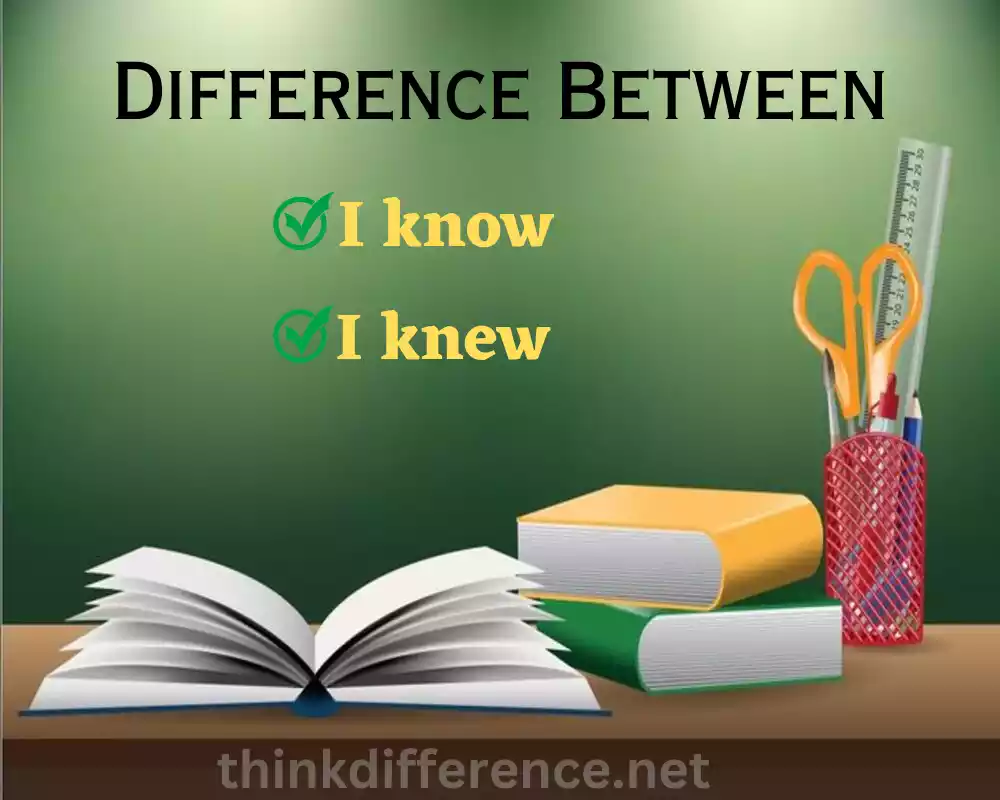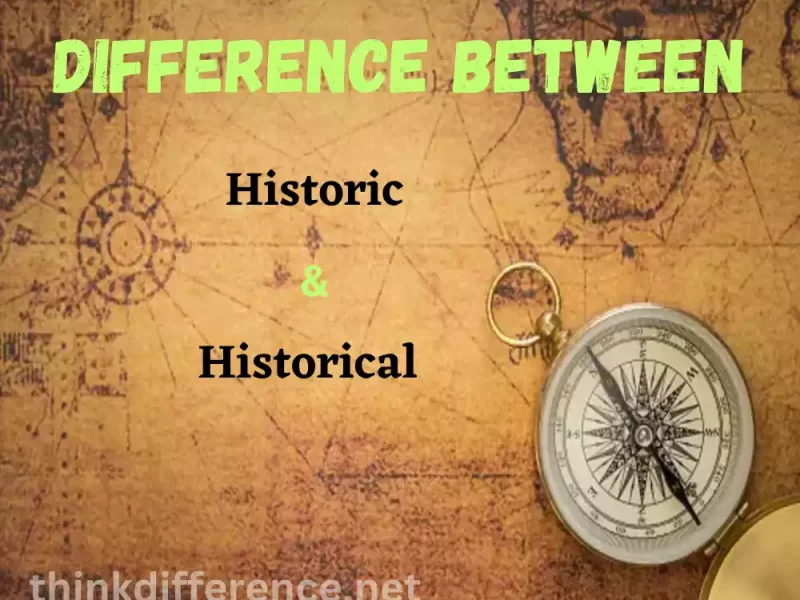I know and I knew might seem interchangeable in everyday conversations. Their subtle distinctions can significantly alter our messages to one another. Below we explore these distinctions between them and how best they should be applied in English.
Definition of “I know”
“I know” is a phrase used to express present knowledge or understanding about something. It signifies that the speaker possesses information or comprehension about a particular subject, situation or fact at the current moment. Responding with “I know,” someone demonstrates their knowledge on a given subject while exuding confidence in it.
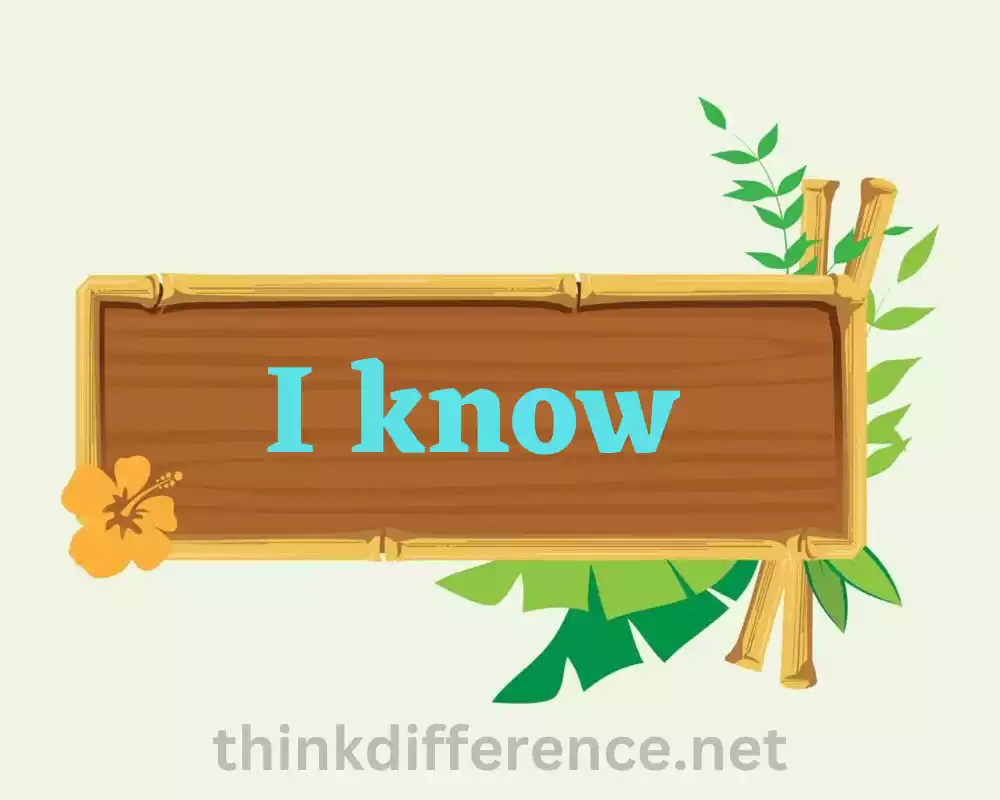
This phrase is often used to confirm or validate one’s awareness or recognition of a fact, concept or statement. It implies a sense of certainty and can indicate that the speaker has prior experience or information that supports their knowledge. “I know” can also be used to express agreement or acknowledgement of a shared understanding in a conversation.
Be mindful that “I know” can take on different meanings depending on your situation. It can range from a simple acknowledgment of awareness to a more profound understanding or expertise in a specific area. The tone and body language accompanying the phrase can influence its meaning, as they can convey confidence, certainty or even skepticism.
Definition of “I knew”
“I knew” is a phrase used to express past knowledge or understanding about something. It indicates that the speaker had information or comprehension about a particular subject, situation or fact in the past. When someone says “I knew,” they are referring to their previous awareness or recognition of something before the present moment.
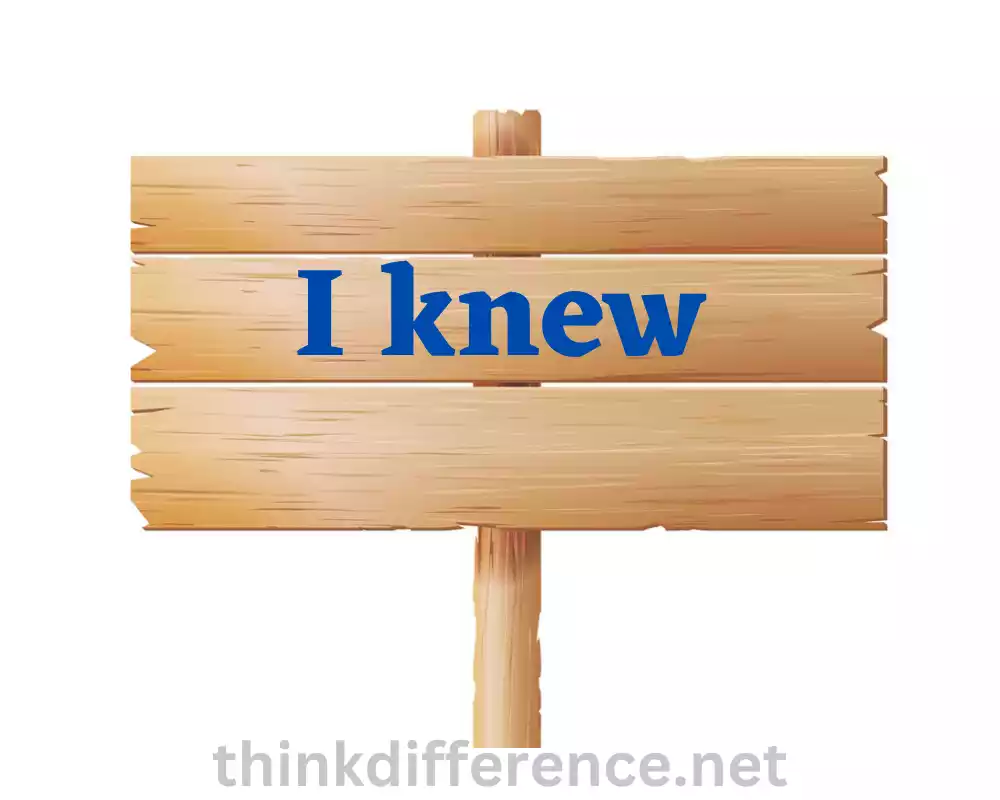
“I knew” refers to knowing something at an earlier time. This does not imply they possess the same level of expertise today. It can indicate that the speaker had a belief or awareness that was accurate or correct at a previous time, even if it may have changed since then.
“I knew” can also be used to convey a sense of hindsight or reflecting on past experiences. It can imply that the speaker had an intuition or foresight about something before it became evident or widely recognized.
“I knew” can convey different meanings depending on its context, tone and body language – it may convey confidence, acceptance or regret depending on its use in conversation and speaker perspective.
Importance of understanding the difference between I know and I knew
Understanding the distinction between “I know” and “I knew” is critical for effective communication as well as knowledge transfer. Here are some primary reasons to be cognizant of their distinction:
- Clarity in communication: Using the correct tense (“I know” for present, “I knew” for past) ensures that the listener understands the temporal context of the statement. It helps avoid confusion and promotes clear communication.
- Accuracy in conveying information: By using the appropriate tense, speakers accurately represent the state of their knowledge. It helps prevent misleading or incorrect information from being conveyed.
- Precision in expressing certainty: “I know” implies a current state of knowledge, indicating confidence and certainty in the speaker’s understanding. “I knew” acknowledges that the knowledge was held in the past, potentially allowing for revisions or updates to that understanding.
- Reflecting on personal growth: “I knew” can indicate that the speaker’s understanding or beliefs have changed since the past knowledge was held. Personal development is of utmost importance and learning from past experiences is invaluable. Also realizing how knowledge changes as time moves forward is paramount to this growth process.
- Respecting temporal context: By using the appropriate tense, speakers demonstrate an understanding of the importance of temporal context in conversations. It shows respect for the timeline of events or information and promotes accurate historical or chronological discussions.
- Enhancing credibility: Proper usage of “I know” and “I knew” demonstrates linguistic accuracy and can contribute to the speaker’s credibility. It shows an understanding of grammatical nuances and indicates a careful and thoughtful expression of knowledge.
- Avoiding misunderstandings: Indiscernible words such as “I knew” can lead to much confusion as listeners can interpret statements differently depending on context. Understanding the difference helps prevent miscommunication and promotes effective dialogue.
Understanding the difference between “I know” and “I knew” is crucial for clear communication, accuracy in conveying information, expressing certainty, reflecting personal growth, respecting temporal context, enhancing credibility and avoiding misunderstandings. It ensures that speakers effectively communicate their current or past knowledge while promoting accurate and meaningful conversations.
Usage of “I Know”
“I know” can be applied in various contexts and situations, from business transactions to everyday interactions with friends. Here are a few instances when this phrase might come in handy:
“I know” or “I understand” can be used as evidence that one has knowledge or comprehension on any particular subject or concept or fact. Examples could include:
- “I know the solution to your question.”
- “I know how to solve this issue.”
Expressing familiarity or awareness: “I know” can indicate that you are familiar with or aware of a certain subject or situation. It acknowledges that you have encountered or experienced it before. For example:
- “I know that restaurant; I’ve been there before.”
- “I understand exactly what you mean; I watched that film myself.
Agreeing or acknowledging shared understanding: “I know” can be used as an affirmative response or acknowledgment that your views align with that of another individual; it shows you are on an equal playing field. For example:
- “A: This new policy is challenging. B: I know, it will take some time to adjust.”
- “A: The concert was incredible. B: I know, the energy was amazing!”
Reacting to Appreciation or Gratitude When someone expresses appreciation or gratitude towards you, acknowledging their expression with “I know” as a response may show your appreciation of their gesture and show it will continue in future exchanges between yourselves and them. Examples may include:
- “Thanks so much for helping out!” “You’re welcome – glad I could provide assistance!”
Asserting confidence or expertise: “I know” can be used to assert confidence or expertise in a particular subject matter. It signifies that you have a high level of knowledge or understanding. For example:
- “I know this topic inside out; I’ve studied it extensively.”
- “I am an industry professional; I understand what’s at stake here.”
Remember that the meaning and tone of “I know” can vary based on the context and delivery. It can indicate certainty, agreement, familiarity or confidence, depending on the situation and the intention behind its usage.
Usage of “I Knew”
“I knew” is a phrase used to indicate past knowledge or understanding about something. Here are some common ways “I knew” is used:
Reflecting on past awareness: “I knew” is often used when reflecting on a previous understanding or belief that was held in the past. It acknowledges that you had knowledge or awareness of something before the present moment. For example:
- “I knew that this project would be challenging from the start.”
- “I knew she would succeed; she has always been determined.”
Confirming prior predictions or expectations: “I knew” can be used to express that your expectations or predictions about a certain outcome or situation turned out to be accurate. It implies that you had foresight or intuition about it. For example:
- “I knew they would win the game; they have a strong team.”
- “My instincts told me something wasn’t quite right; something felt off.
Admitting past mistakes or misconceptions: “I knew” can also be used to acknowledge that you had incorrect knowledge or understanding in the past. It reflects a realization that your previous beliefs or assumptions were wrong. For example:
- “Initially I thought my answer to be different but now realize my mistake.”
- “I knew I had misunderstood the instructions after it was too late.”
Indicating prior awareness before an event or revelation: “I knew” can express that you had prior knowledge or awareness of something before it became widely known or revealed. It signifies that you were already aware of the information. For example:
- “I knew about their engagement before they made the announcement.”
- “I knew the secret before it was revealed to everyone.”
Emphasizing personal experience or expertise: “I knew” can be used to assert that you have personal experience or expertise in a particular area, indicating that you possessed knowledge or understanding in the past. For example:
- “I knew the solution because I had encountered a similar problem before.”
- “I knew the answer because I have studied this subject extensively.”
Remember that “I knew” is used to refer to past knowledge or understanding, reflecting on previous awareness, predictions, misconceptions or personal experience. The context and tone of the conversation will help determine the specific meaning and intention behind its usage.
Differences between “I know” and “I knew”
The differences between “I know” and “I knew” lie in their tense and usage. Here’s a breakdown of their distinctions:
1. Tense:
- “I know” is in the present tense, indicating current knowledge or understanding.
- “I knew” is in the past tense, indicating knowledge or understanding that existed in the past.
2. Present vs. Past:
- “I know” refers to information or understanding that is current and ongoing. It implies that the speaker has knowledge or familiarity with a particular subject or situation at the present moment.
- “I knew” refers to knowledge or understanding that existed in the past but may not be relevant or applicable anymore. That does not imply they possess all of the knowledge or understanding.
3. Certainty and Confirmation:
- “I know” is used to express certainty or confirmation of a fact or piece of information. It suggests that the speaker is confident in their knowledge or understanding.
- “I knew” is used to indicate that the speaker had previous knowledge or awareness of something. It can imply that the speaker had an understanding before a specific event or revelation occurred.
4. Immediate vs. Preceding Knowledge:
- “I know” focuses on the present and emphasizes the immediate awareness or understanding of a topic.
- “I knew” emphasizes the past and indicates that the knowledge or understanding predates the current moment or a specific event.
5. Relevance to the Present:
- “I know” is generally used when the knowledge or understanding is current and applicable to the ongoing conversation or situation.
- “I knew” can often refer back to prior knowledge or information which might not apply in a present setting.
Consideration must be given to the context within which “I know” and “I knew” are being employed for proper interpretation and purpose. Their use conveys various interpretations regarding understanding or knowing, different tenses highlight different forms of knowing or comprehension while underscoring current or past awareness states.
Common Mistakes and Confusions
Common errors and miscommunications in communication could stem from different causes.
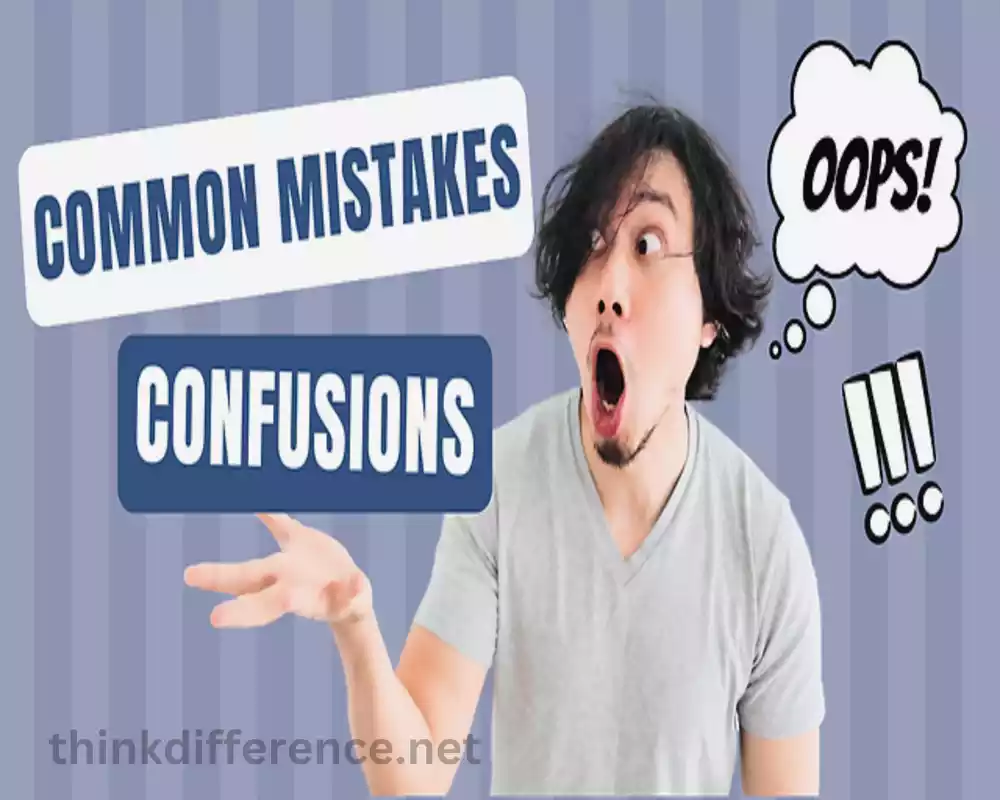
Here are a few of the more frequently occurring mistakes which lead to miscommunication:
- Lack of clarity: Failure to communicate clearly and concisely could create unnecessary chaos and lead to irreparable confusion. This includes using ambiguous language, being vague or not providing enough context to support the message.
- Misinterpretation of tone: Written communication lacks many of the nonverbal cues present during face-to-face dialogue, including body language and facial expressions, making written messages susceptible to misreadings that could cause offense.
- Assumptions and presuppositions: Making assumptions about what others know or understand can lead to miscommunication. Assuming that the other person shares the same background knowledge or perspectives can result in confusion if those assumptions are incorrect.
- Semantic ambiguity: Words or phrases with multiple interpretations may lead to unnecessary confusion if their intended usage remains obscure in context. Homonyms, homophones or words with multiple interpretations can be misinterpreted if their intended sense is not specified.
- Cultural and linguistic differences: Cultural and linguistic variations can lead to misunderstandings. Different languages, idiomatic expressions or cultural norms may not have direct equivalents, causing confusion when attempting to convey certain ideas or concepts.
- Lack of active listening: Poor listening skills can contribute to misunderstandings. Failure to engage fully in conversations, pay close attention to words spoken by speakers and avoid making assumptions can all increase the chance for misinterpretation and lead to unexpected interpretations of conversations.
- Incomplete or insufficient information: Lack of relevant information or incomplete details can hinder understanding. Important facts or context may be missing, leading to misinterpretations or incorrect conclusions.
- Emotional bias and personal filters: Emotions, personal biases and preconceived notions can color our interpretation of messages. False perceptions or misapprehension, in addition to biased and inaccurate judgements may result.
To mitigate these mistakes and confusions, it’s essential to strive for clarity, actively listen, ask for clarifications when needed, provide sufficient context and be aware of cultural and linguistic differences. Taking the time to ensure mutual understanding and using effective communication strategies can help minimize misunderstandings and promote successful interactions.
Subtle Nuances and Expressions
Subtle nuances and expressions in communication can significantly impact the meaning and interpretation of messages. Here are some examples of these nuances and expressions:
- Tone of voice: The tone of voice conveys emotions and attitudes that influence how a message is perceived. A slight change in tone can alter the meaning or intent of a statement, such as sarcasm, excitement, frustration or sincerity.
- Facial expressions: Facial expressions such as smiles or frowns, eyebrows raised or eye rolls convey key information regarding mood and attitude. They can enhance or contradict the verbal message, adding depth and context to the communication.
- Body language: Nonverbal cues through body language, such as posture, gestures and movements, contribute to the overall communication. They can convey confidence, interest, nervousness, or disengagement, shaping the interpretation of the message.
- Subtle pauses: Pauses in speech can be used for emphasis, to indicate thoughtfulness or to create anticipation. The duration and placement of pauses can change the meaning or emphasis of a sentence.
- Word choice and emphasis: The specific words chosen and the emphasis placed on certain words can add nuances to the message. It can convey emphasis, urgency, importance or personal perspective.
- Politeness markers: Polite words such as, “please,”, “thank you,” or “excuse me” help set an appropriate and polite message. They convey respect, courtesy and consideration for the listener.
- Subtext: Subtext refers to the underlying or implied meaning that is not explicitly stated. It involves reading between the lines and understanding the hidden messages or intentions behind the words spoken. Subtext can be conveyed through tone, pauses and subtle cues.
- Humor and sarcasm: Humor and sarcasm rely heavily on subtle cues such as timing, tone and delivery to convey their intended message. Understanding these nuances is essential for correctly interpreting humorous or sarcastic statements.
- Cultural expressions: Different cultures have unique expressions and idioms that may not have direct translations or equivalents in other languages. Understanding these cultural expressions is crucial for accurate comprehension and effective cross-cultural communication.
- Contextual references: Making references to shared experiences, events or cultural symbols adds depth and meaning to communication. Contextual references can create connections, evoke emotions or enhance understanding among individuals who share common knowledge or background.
Being attentive to these subtle nuances and expressions helps to interpret messages more accurately and capture the full meaning behind the words spoken or written. It requires active listening, observation and sensitivity to the context and cultural factors influencing communication.
Impact on Communication
Subtle nuances and expressions have a significant impact on communication. Here are some ways in which they can influence the effectiveness and understanding of messages:
- Enhanced clarity: Subtle cues such as voice tone, facial expressions and body language can add layers of meaning and context to what we say. They provide valuable context and help convey the intended message more precisely.
- Emotion and empathy: Subtle nuances and expressions allow for the expression and recognition of emotions in communication. They help convey empathy, understanding, and connection between individuals, fostering a deeper level of emotional engagement and rapport.
- Nuanced meaning: Subtle cues provide nuance and depth to communication. They can alter the meaning or interpretation of a message, emphasizing certain aspects, conveying sarcasm, irony or indicating shades of agreement or disagreement.
- Nonverbal cues: Nonverbal signals such as facial expressions and body language often carry greater power and authority than mere words alone. They can convey sincerity, trustworthiness and credibility, adding a layer of authenticity and reinforcing the verbal message.
- Cultural understanding: Subtle nuances and expressions are often influenced by cultural norms and practices. Understanding cultural signals is paramount for effective cross-cultural dialogue as this helps provide more precise interpretation of meaning.
- Building rapport and relationships: Paying attention to subtle cues and responding appropriately helps build rapport and strengthen relationships. An attentive listener demonstrates full engagement in any conversation by paying close attention to one person’s emotions and seeking deeper connections through dialogue.
- Resolving conflicts and misunderstandings: Subtle nuances and expressions can play a crucial role in resolving conflicts and misunderstandings. Psychometric tests offer additional insight into the emotions, motivations and perspectives of other individuals which allows for improved communication and conflict resolution.
- Enhancing persuasion and influence: Subtle cues can be used strategically to enhance persuasion and influence. Understanding the emotions and reactions of others enables the tailoring of messages to resonate with their needs, concerns or desires.
- Misinterpretation and misunderstandings: Missed subtle signals or misinterpreting their meaning may result in miscommunication and cause delays to communication processes, leading to either confusion or decreased efficiency in dealing with others. Incorrectly reading nonverbal cues or missing subtle contextual references can result in confusion or misaligned interpretations.
- Active listening and engagement: Being attuned to subtle nuances and expressions requires active listening and engagement. It demonstrates respect, interest and attentiveness, fostering a positive communication dynamic and encouraging open dialogue.
Subtle nuances and expressions significantly impact communication by enhancing clarity, conveying emotions, adding nuanced meaning, building rapport, facilitating cultural understanding, resolving conflicts and influencing others. Recognizing and interpreting these subtle cues contribute to more effective and meaningful communication exchanges.
Summary
“I know” and “I knew” differ in usage and tense. While the former indicates current understanding or knowledge, “I knew” refers to knowledge or awareness prior to an incident or revelation and may or may not apply in today’s time frame. Understanding these two expressions accurately will allow one to effectively interpret any speaker’s intent in speech.
Understanding them both effectively will allow clear interpretation of all speaker messages delivered during any dialogue session or conversation.

